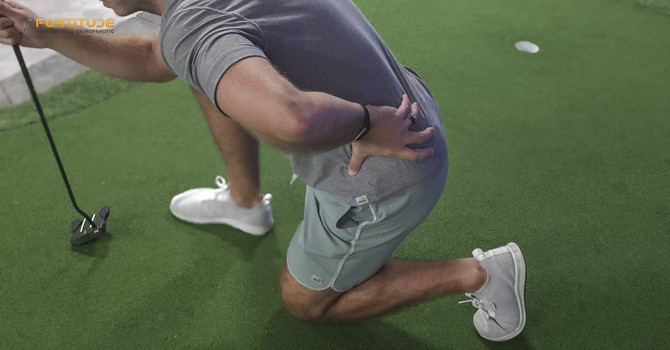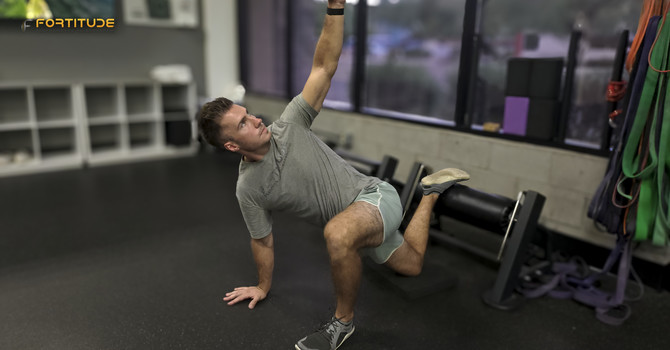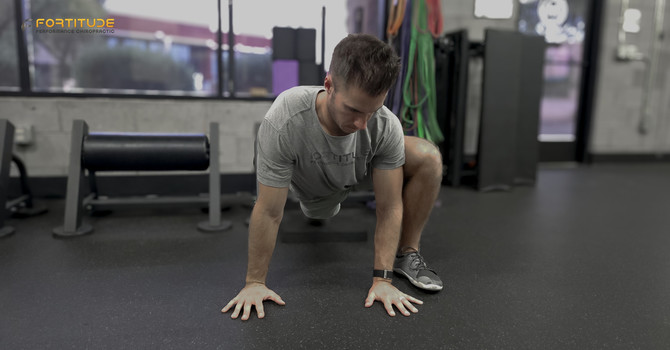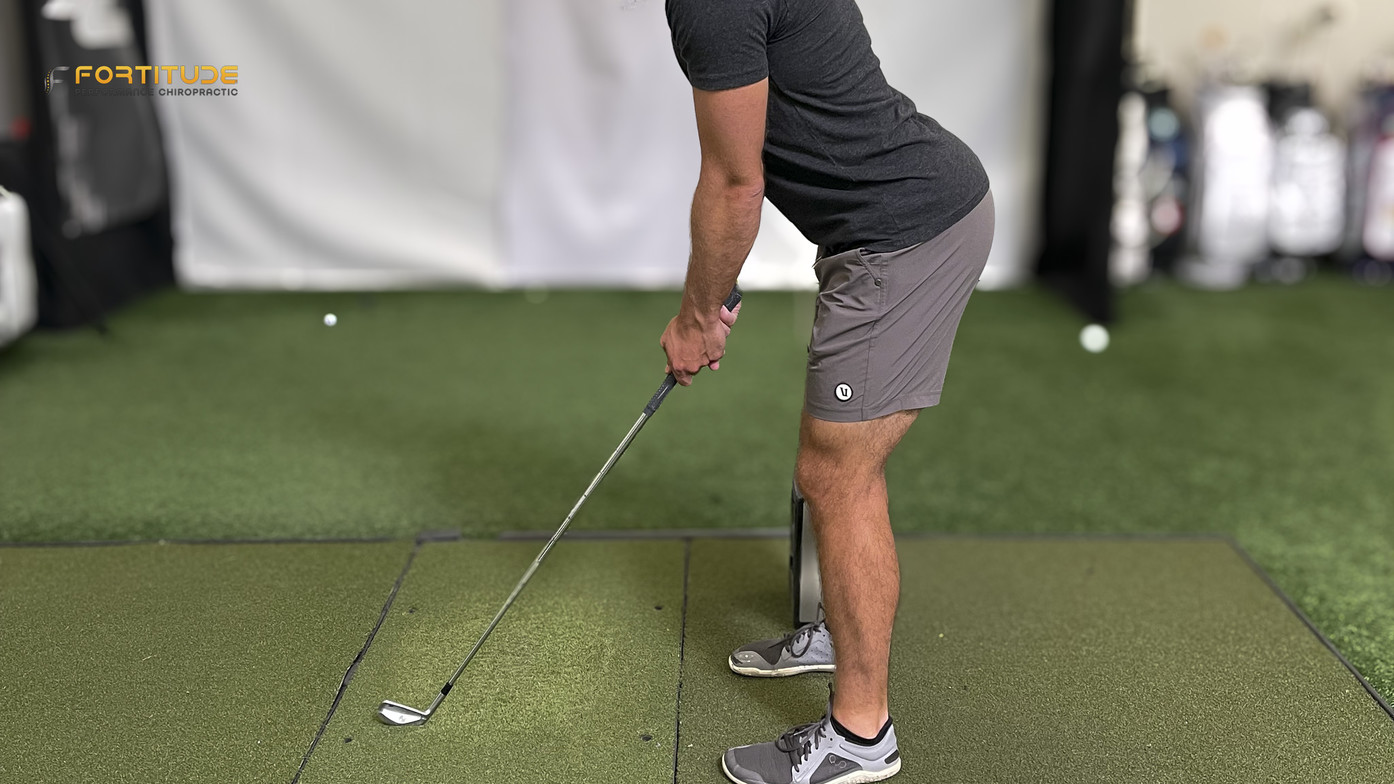
Why Your Golf Swing Causes Back, Hip, or Rib Pain and How to Fix It
If your golf swing leaves you wincing instead of celebrating a clean shot, you’re not alone. Back, hip, and rib pain are some of the most common complaints we hear from golfers in Scottsdale.
The frustrating part? Most of the time it isn’t actually your back or hip that’s the problem at all. The real issue usually hides in how your body moves, and until you fix it, every swing just piles on more strain.
Lower back pain is actually one of the most common complaints among golfers, even the pros. The golf swing demands a lot of rotation and power, which can put considerable stress on your body. But here’s the twist – the spot that hurts is often just the victim, not the cause.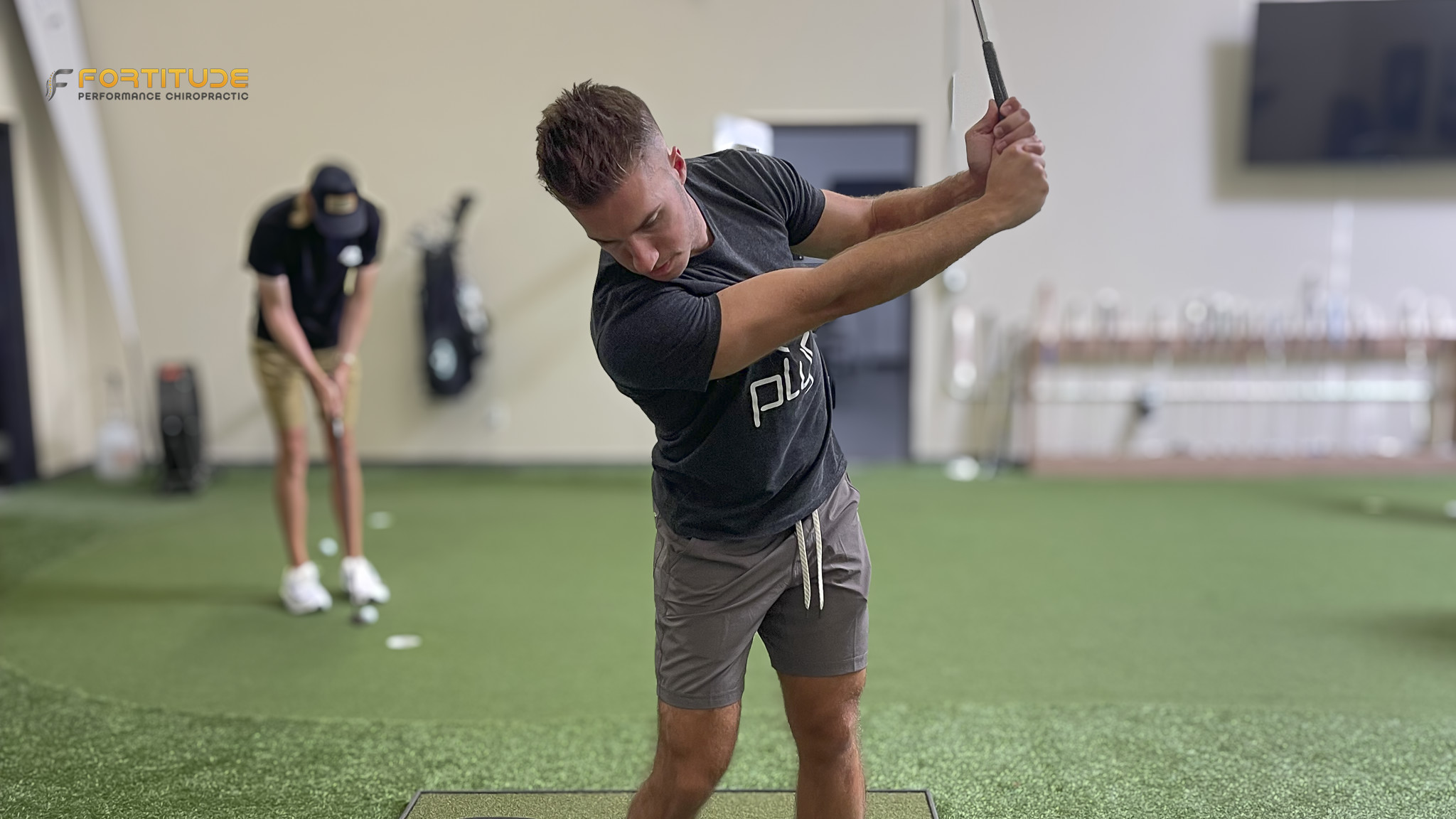
In fact, that nagging back (or hip or side) pain is usually a symptom of a deeper issue: often some other part of your body isn’t moving or supporting like it should, forcing the painful area to pick up the slack.
In this post, we’ll break down the mechanics behind golf swing-related pain, explain why the real problem might not be where you think, and show how chiropractic care can get you back to swinging without pain.
Why Your Golf Swing Might Hurt (Common Causes)
A golf swing is a whole-body movement, and weak links anywhere in the chain can lead to pain. Most golfers don’t realize how much stress they’re putting on their back and joints when key areas of mobility or strength aren’t up to par. (pun intended..)
Limited Hip Mobility
The hips are supposed to provide a large portion of the rotation in a swing. If your hips are too tight or restricted, your lower back may twist more to compensate, leading to unnecessary strain through the joints of the low back..
Lack of Core Stability
A stable, strong core is what protects your spine during the explosive rotation of a drive. If your core muscles aren’t supporting you, the force of the swing can overload the joints and discs in your back.
Thoracic Spine Stiffness
The thoracic spine (mid- and upper back) is built for rotation – your lower back is not. When the thoracic spine is stiff and doesn’t rotate enough, the lower back may try to twist beyond its safe range to compensate, leading to pain and sometimes rib irritation.
Other factors like old injuries or improper swing mechanics can contribute as well. But often, those swing flaws stem from the physical issues above.
Why the Pain Isn’t Always Where the Problem Is
This is the part that surprises most people:
The source of your golf swing pain is often not where you feel the pain. Sure, your back is aching or your hip is throbbing, but those may just be the areas screaming for help because another part of your body isn’t pulling its weight.
Think of your body as an interconnected chain: if one link doesn’t move well, the adjacent links suffer. Over 18 holes (and countless practice swings), those compensations add up.
“We had a golfer come in recently with what he described as ‘tight low back pain’ that always showed up by the 12th hole. But after running him through a movement screen, we found the real issue wasn’t his back at all – it was his hip mobility and inability to separate his upper body from his lower body. Once we cleaned up how his hips and upper body were moving, the back pain disappeared.” – Dr. Molly
As Dr. Maxim adds, “The golfer will swear it’s their back causing the problem, but once we improve their hip rotation and ability to separate the upper body from the lower body, the swing feels smoother, the back pain eases, and their power actually improves.”
The lesson? Don’t chase the pain – find the cause.
How a Chiropractic Golf Assessment Uncovers the Real Issue
At Fortitude Performance Chiropractic, we take a whole-body approach to uncover what’s really driving your pain. During a Titlist Performance Institute golf-specific assessment, we examine:
- Hip Mobility: Can your hips rotate enough to prevent your spine from overworking?
- Swing Mechanics & Hinge: How your posture and swing affect your back.
- Core Stability: Whether your core muscles are protecting your spine.
- Thoracic Spine & Shoulder Mobility: Key for safe, powerful rotation.
- Past Injuries or Imbalances: Subtle leftover issues from old injuries.
From there, we build a personalized treatment plan with chiropractic adjustments, soft tissue work, and rehab drills designed for your unique body.
“In most golf evals, we use drills to see how your body works under pressure and through the golf swing. One simple cue that surprises a lot of golfers is teaching them how to load their trail hip properly – once they get it, they feel more power and their back stops doing all the work,” says Dr. Maxim.
Don’t Ignore the Warning Signs
If you’ve been battling aches during or after golf, take it as a message. The good news is, with the right assessment and treatment, you can get back to enjoying golf without the worry.
Free Golf Movement Assessment ?! Ready to fix the real issue behind your swing pain and get back to pain-free, powerful golf? Come in for a complimentary golf movement assessment at Fortitude Performance Chiropractic by clicking here to book a call with our team of experts.. Book today and start swinging freely again.
Frequently Asked Questions (FAQ)
Can a golf swing cause back pain?
Yes. A repetitive swing with poor movement patterns can overload your spine if your hips,, or upper back, shoulder, ankle and others aren’t doing their correct job.
Should I play through pain after golf?
Sharp pain, numbness, or tingling should never be ignored. Mild soreness may be okay short term, but it’s a sign something needs fixing.
Why do I feel pain after the round, not during?
Your body often masks pain during activity. Once you cool down, inflammation sets in and overworked areas make themselves known.
How can I warm up to avoid pain
A quick dynamic warm-up, hip circles, torso rotations, planks, can prime your body to move better and reduce injury risk. If you’re looking for the top exercises we give that have helped hundreds of golfers relieve back pain download our free back pain guide for golfers here (or something like this and link the golf guide)

Fortitude Performance Chiropractic
Contact Me
